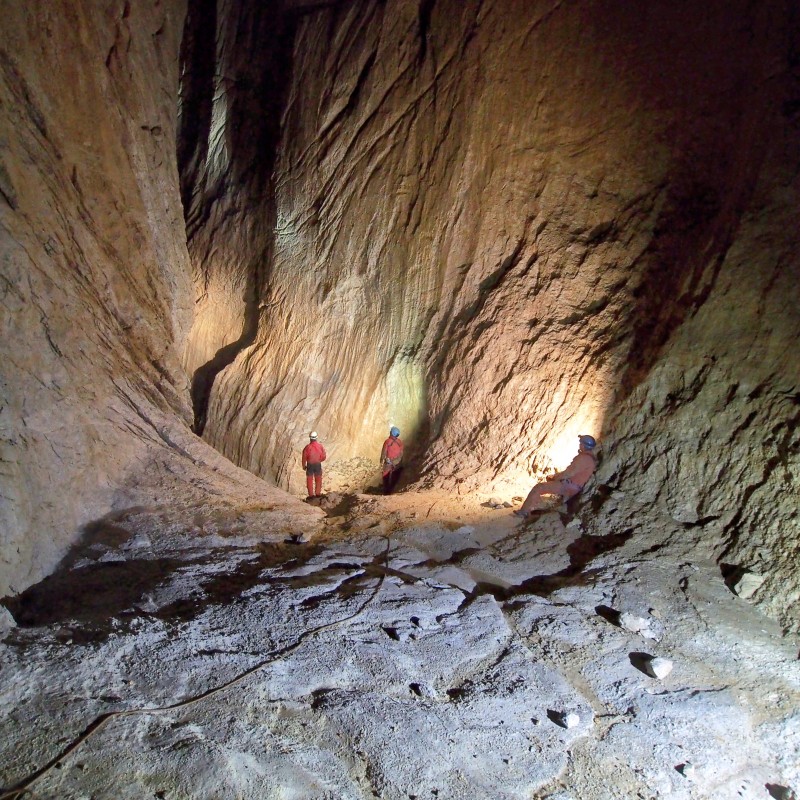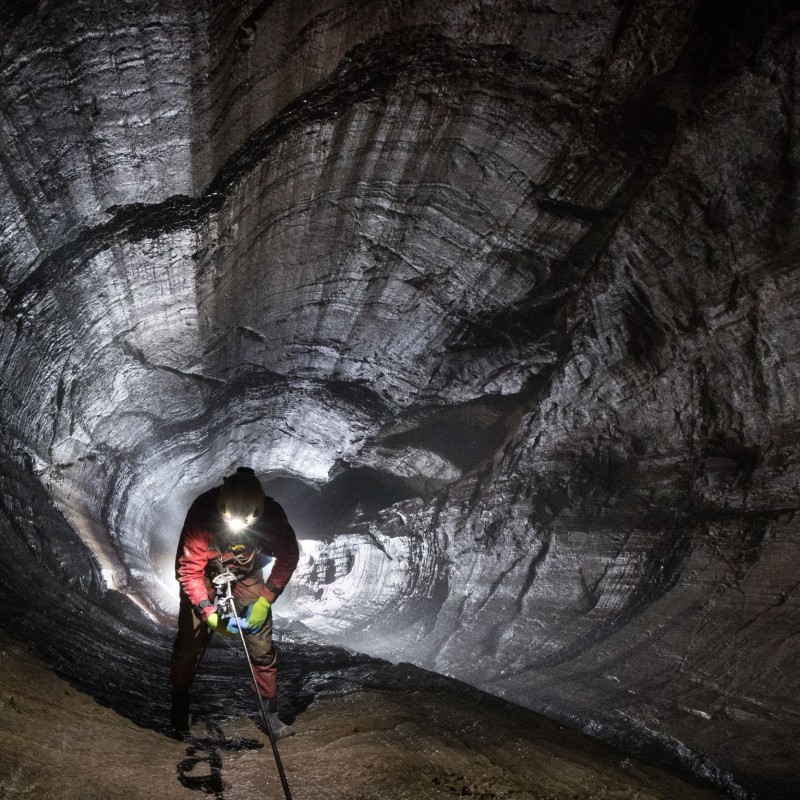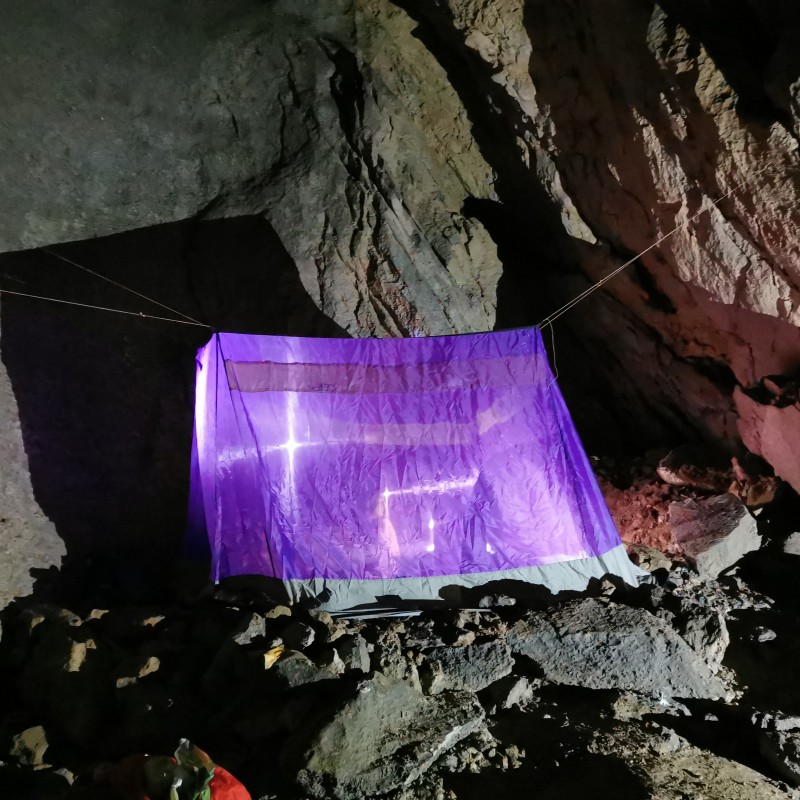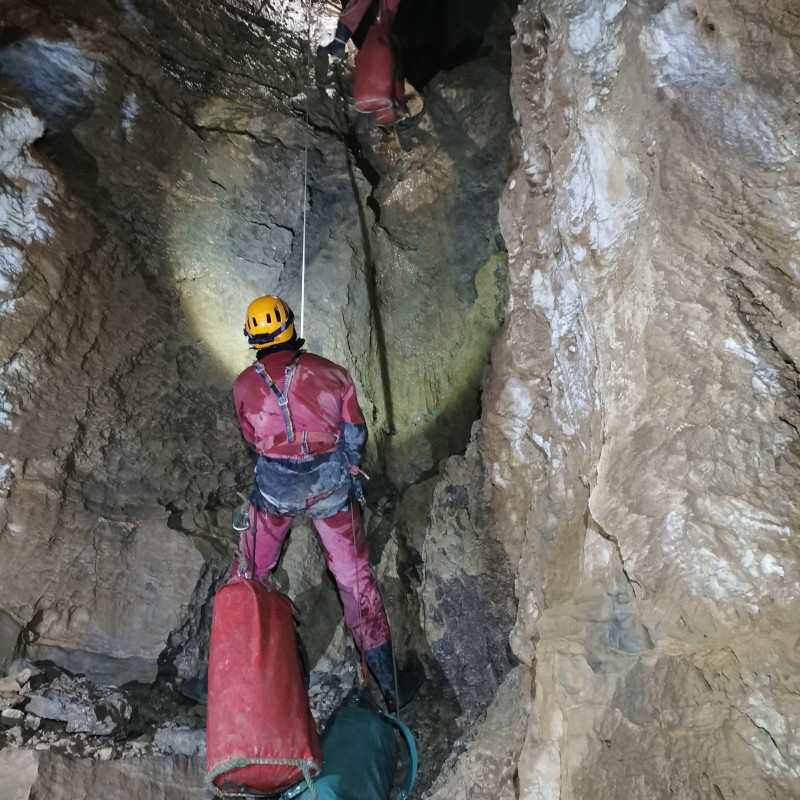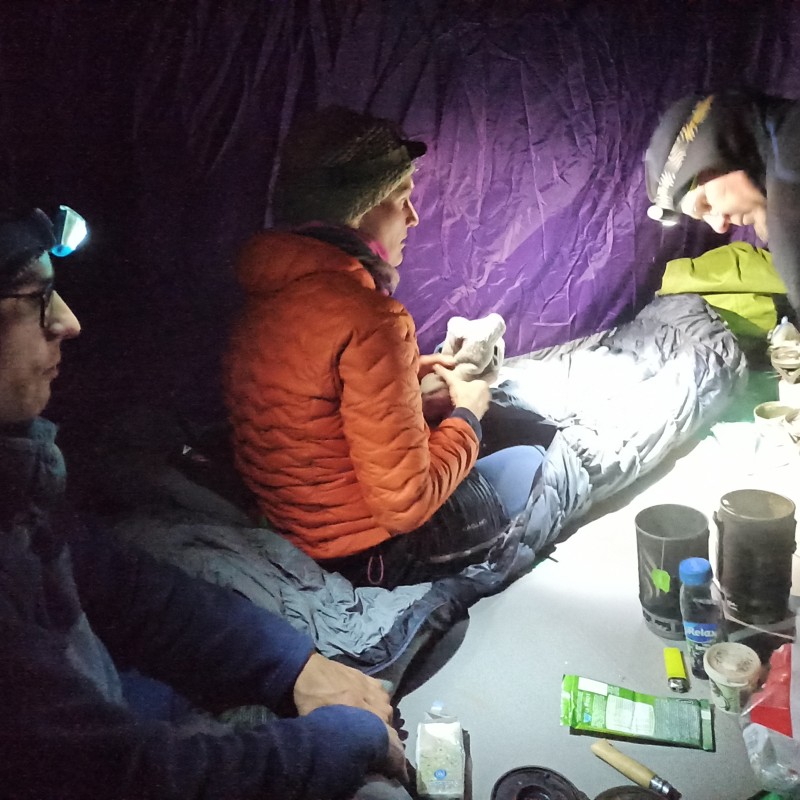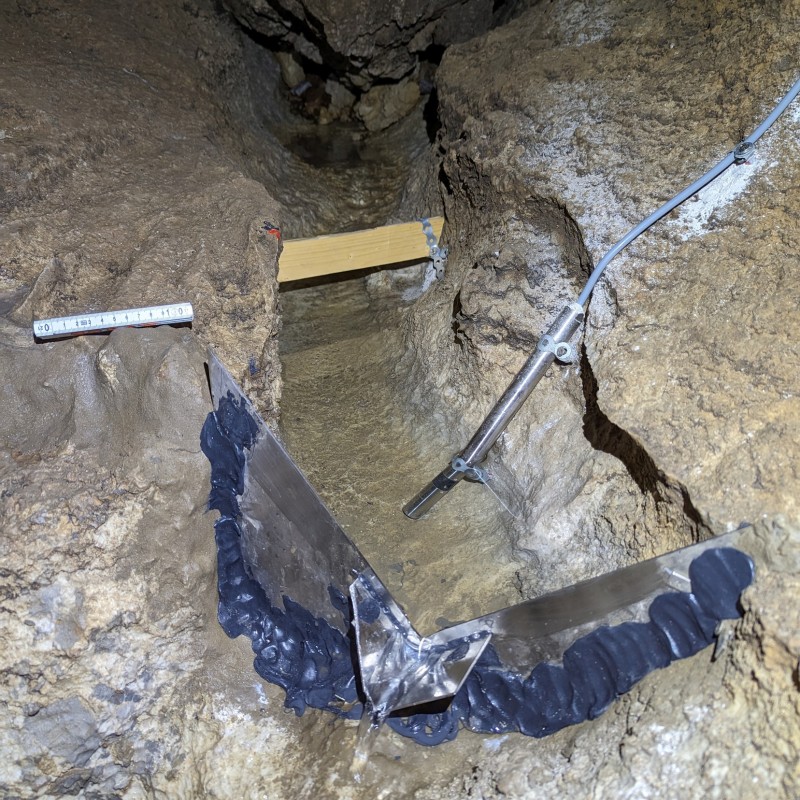NHM cave research delves ever deeper into the Steinbockschacht shaft: Styria’s deepest cave surveyed at 1,127 metres in the Hochschwab massif
18. September
2023
The Hochschwab massif is one of the largest
karst massifs of the Northern Calcareous Alps, though it is not among the most widely known. The Natural History Museum Vienna’s
karst and cave research team and the state cave research association of Vienna and Lower Austria have carried out extensive
research there since 1996 in order to collect data fundamental to quality assurance for Vienna’s drinking water supply.
The currently most promising site is a shaft in the Rauchtal valley called Steinbockschacht, which an international team has
been exploring since 2011. In 2018, the depth of this cavern was measured to be more than 1,000 metres.
The aim of a one-week expedition in September 2023 was to survey new parts of the cave so as to later collect data on underground water supply. The expedition was able to survey the deepest cave in Styria, with a depth of 1,127 metres.
Advancing into the cave required two climbing tours: a two-day preparatory tour undertaken by Lukas Plan (NHM Vienna), Thomas Weigner and David Wundsam, which took them to a depth of 900 metres, as well as the exploration tour by Otakar Krásný (CZ), Eva Kaminksy und Anastasiia Gorbenkova (RU). The three researchers were able to pass a bottleneck near the previous endpoint at 1,075 metres below entry level and to rappel further down. The lowest point surveyed is a siphon, i.e. a tunnel completely filled with water. In nearby dry tunnels, the researchers were able to advance to even greater depths. They therefore suspect that the Steinbockschacht shaft may actually be even deeper.
The exploration tour took a total of 53 hours, with the researchers bivouacing twice at a depth of 500 metres. Permanently installed ropes are necessary to descend almost the entire depth of this cavern, requiring special equipment and training.
Springs and wells in the Hochschwab region cover around 55% of Vienna’s water supply, and 30% of the water supply of Graz. Hydrological surveys in limestone caves are an opportunity to observe and measure water on its path from surface percolation all the way to the wells in the valley. In the Steinbockschacht shaft, a survey station was therefore installed at a depth of 170 metres to record variations in hydrological parameters such as flow, temperature and mineralisation. Geophysical investigations were also carried out to determine the water saturation of the rock mass at various points in time.
These data collected by NHM Vienna serve to better model the subterranean water flow. This, in turn, is expected to help in developing strategies for drinking water protection so as to be prepared, for instance, for changing precipitation conditions as a consequence of climate change. The research is supported by Municipal Department 31 - Vienna Water and the Austrian Science Fund FWF.
Research contact:
Dr. Lukas Plan
NHM Vienna, Department of Geology and Palaeontology, karst and cave research
Tel. +43 1 5230418 - 10
lukas.plan@nhm-wien.ac.at
Press contact:
Mag. Irina Kubadinow
NHM Vienna, press spokesperson
Tel. + 43 1 52177 – 410
irina.kubadinow@nhm-wien.ac.at
The aim of a one-week expedition in September 2023 was to survey new parts of the cave so as to later collect data on underground water supply. The expedition was able to survey the deepest cave in Styria, with a depth of 1,127 metres.
Advancing into the cave required two climbing tours: a two-day preparatory tour undertaken by Lukas Plan (NHM Vienna), Thomas Weigner and David Wundsam, which took them to a depth of 900 metres, as well as the exploration tour by Otakar Krásný (CZ), Eva Kaminksy und Anastasiia Gorbenkova (RU). The three researchers were able to pass a bottleneck near the previous endpoint at 1,075 metres below entry level and to rappel further down. The lowest point surveyed is a siphon, i.e. a tunnel completely filled with water. In nearby dry tunnels, the researchers were able to advance to even greater depths. They therefore suspect that the Steinbockschacht shaft may actually be even deeper.
The exploration tour took a total of 53 hours, with the researchers bivouacing twice at a depth of 500 metres. Permanently installed ropes are necessary to descend almost the entire depth of this cavern, requiring special equipment and training.
Springs and wells in the Hochschwab region cover around 55% of Vienna’s water supply, and 30% of the water supply of Graz. Hydrological surveys in limestone caves are an opportunity to observe and measure water on its path from surface percolation all the way to the wells in the valley. In the Steinbockschacht shaft, a survey station was therefore installed at a depth of 170 metres to record variations in hydrological parameters such as flow, temperature and mineralisation. Geophysical investigations were also carried out to determine the water saturation of the rock mass at various points in time.
These data collected by NHM Vienna serve to better model the subterranean water flow. This, in turn, is expected to help in developing strategies for drinking water protection so as to be prepared, for instance, for changing precipitation conditions as a consequence of climate change. The research is supported by Municipal Department 31 - Vienna Water and the Austrian Science Fund FWF.
Research contact:
Dr. Lukas Plan
NHM Vienna, Department of Geology and Palaeontology, karst and cave research
Tel. +43 1 5230418 - 10
lukas.plan@nhm-wien.ac.at
Press contact:
Mag. Irina Kubadinow
NHM Vienna, press spokesperson
Tel. + 43 1 52177 – 410
irina.kubadinow@nhm-wien.ac.at

